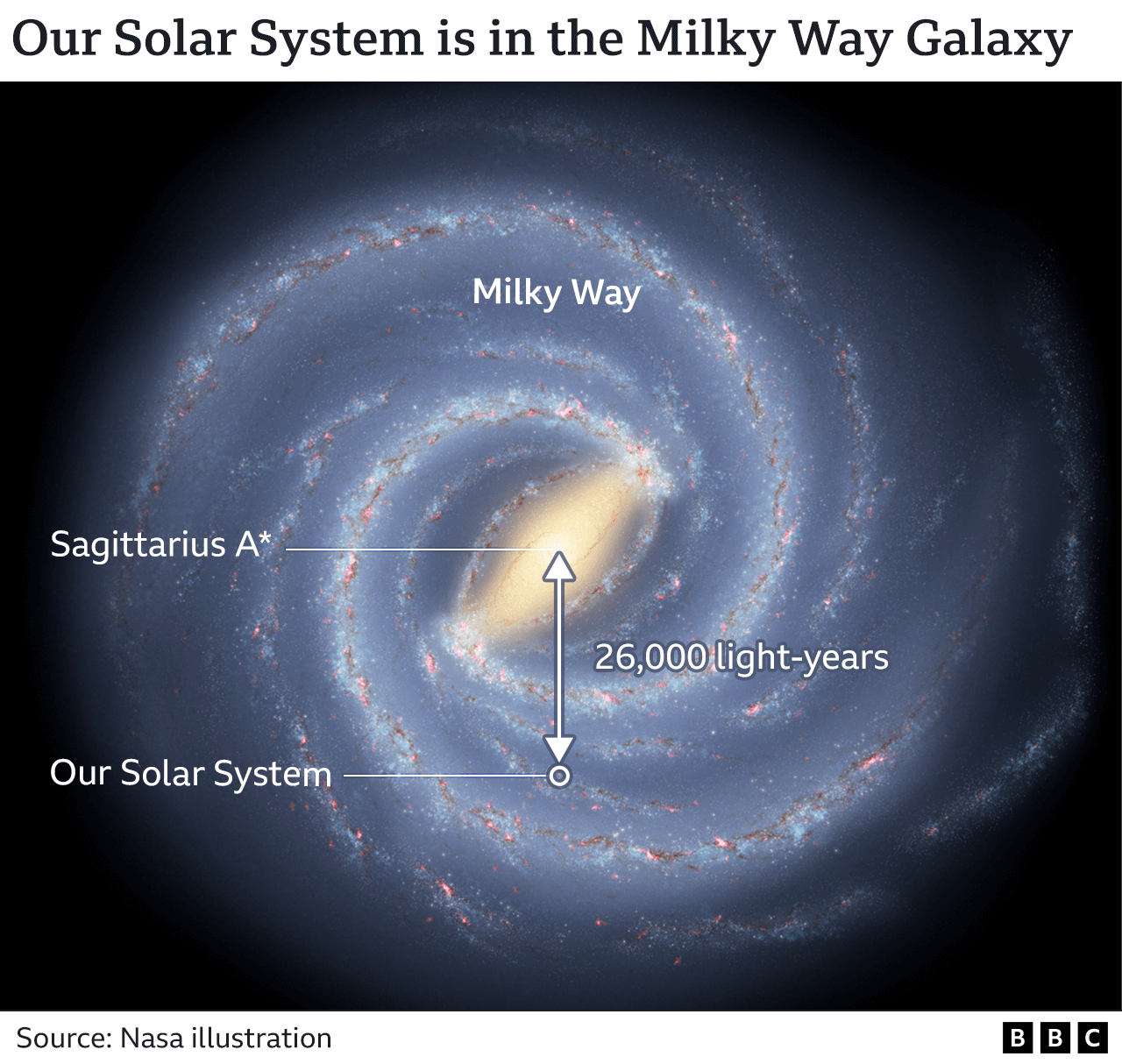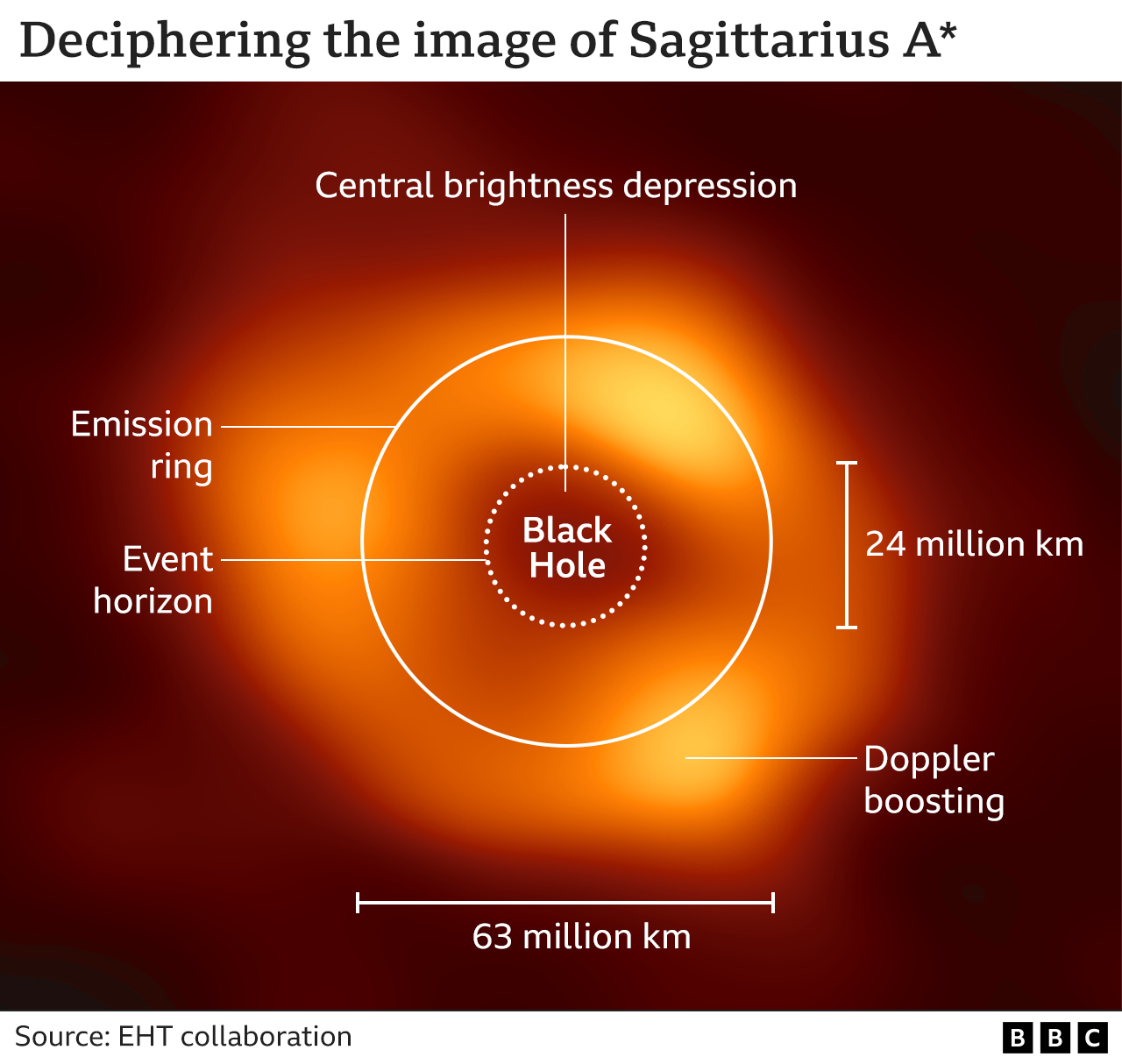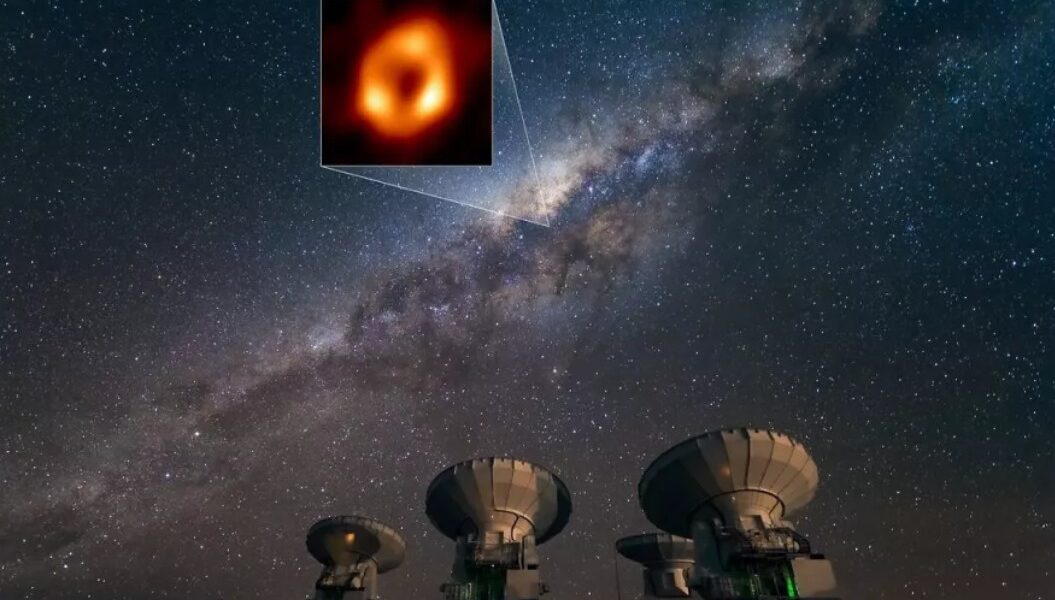Known as Sagittarius A*, this is the gargantuan black hole that lives at the centre of our galaxy and is a staggering four million times the mass of our Sun - and its terrifying reality has been photographed for the first time.

What you see is a central dark region where the hole resides, circled by the light coming from super-heated gas accelerated by immense gravitational forces.
For scale, the ring is roughly the size of Mercury's orbit around our star. That's about 60 million km, or 40 million miles, across.
Fortunately, this monster is a long, long way away - some 26,000 light-years in the distance - so there's no possibility of us ever coming to any danger.
On May 12, 2022, scientists unveiled the first-ever image of Sagittarius A*.
The historic image of Sagittarius A* (or Sgr A* for short) came courtesy of the Event Horizon Telescope, a planet-wide array of observatories best known for capturing the event horizon of a black hole in Messier 87 (M87) in 2019.

The image was taken in submillimeter radio waves, revealing there is indeed a black hole embedded in the heart of the Milky Way, eating on any hydrogen gas available.
The image was also a massive technological breakthrough after years of attempting to capture Sgr A*, which is much smaller than M87.
At a distance of 26,000 light-years from Earth, Sagittarius A*, or Sgr A* for short, is a tiny pinprick on the sky. To discern such a target requires incredible resolution.
The EHT's trick is a technique called very long baseline array interferometry (VLBI).
Essentially, this combines a network of eight widely spaced radio antennas to mimic a telescope the size of our planet.

This arrangement enables the EHT to cut an angle on the sky that is measured in microarcseconds. EHT team members talk about a sharpness of vision akin to being able to see a bagel on the surface of the Moon.
Even then, atomic clocks, smart algorithms and countless hours of supercomputing are needed to construct an image from several petabytes (1 PB equals one million gigabytes) of gathered data.
The way a black hole bends, or lenses, light means there is nothing to see but a "shadow", but the brilliance of the matter screaming around this darkness and spreading out into a circle, known as an accretion disc, betrays where the object is.
The super-heated, excited gas - or plasma - in the ring is travelling around the black hole at a significant fraction of light-speed (300,000km/s, or about 190,000 miles per second). The brighter regions are likely places where material is moving towards us and where its light emission is being energised, or "doppler boosted", as a consequence.
These rapid changes in the vicinity of Sgr A* are part of the reason why it has taken so much longer to produce an image than for M87. Interpretation of the data has been a tougher challenge.
The telescope observations for both black holes were actually acquired during the same period in early 2017, but M87, at its greater size and distance of 55 million light-years, looks static by comparison.
Scientists have already begun to deploy the measurements in the new image to test the physics we currently use to describe black holes. So far, what they see is entirely consistent with the equations set out by Einstein in his theory of gravity, of general relativity.
We've suspected for several decades that a supermassive black hole lives at the centre of the galaxy. What else could produce gravitational forces that accelerate nearby stars through space at speeds of up 24,000km/s (for comparison our Sun glides around the galaxy at a sedate 230km/s, or 140 miles per second)?
But, interestingly, when the Nobel Prize committee honoured astronomers Reinhard Genzel and Andrea Ghez with its physics award in 2020 for their work on Sgr A*, the citation spoke only of "a supermassive compact object". It was wriggle room in case some other exotic phenomenon turned out to be the explanation.
There can be no doubt now, however.
Come this August, the new super space telescope, James Webb, will turn its eye on Sgr A*. The $10bn observatory won't have the resolution to directly image the black hole and its accretion ring, but it will bring new capability to the study of the environment around the black hole with its incredibly sensitive infrared instruments.
Astronomers will be studying in unprecedented detail the behaviour and the physics of hundreds of stars whipping around the black hole. They'll even be looking to see if there are some star-sized black holes in the region, and for evidence of concentrated clumps of invisible, or dark, matter.
"Every time we get a new facility that can take a sharper image of the Universe, we do our best to train it on the galactic centre, and we inevitably learn something fantastic," said Dr Jessica Lu, the assistant professor from the University of California, Berkeley, US, who will lead the Webb campaign.


